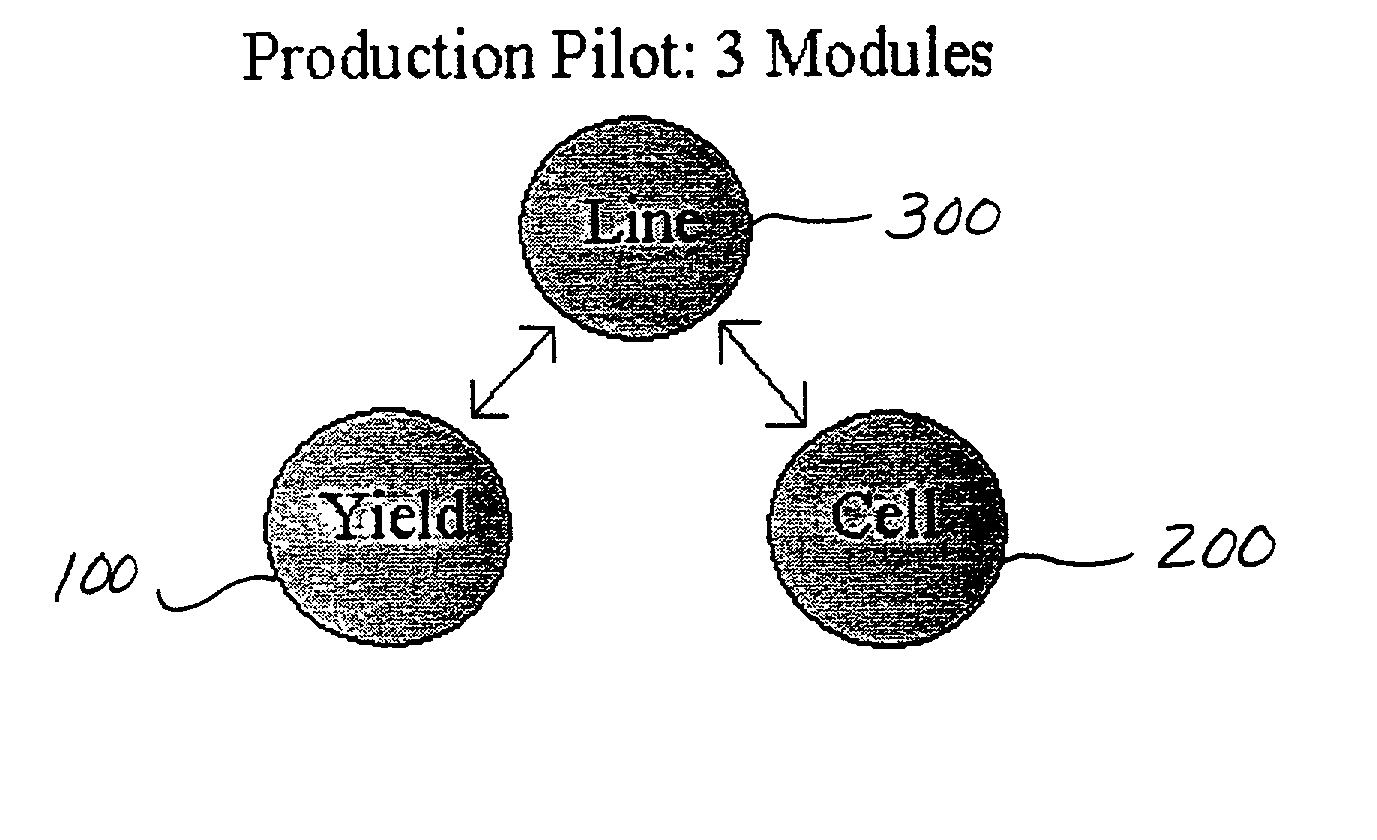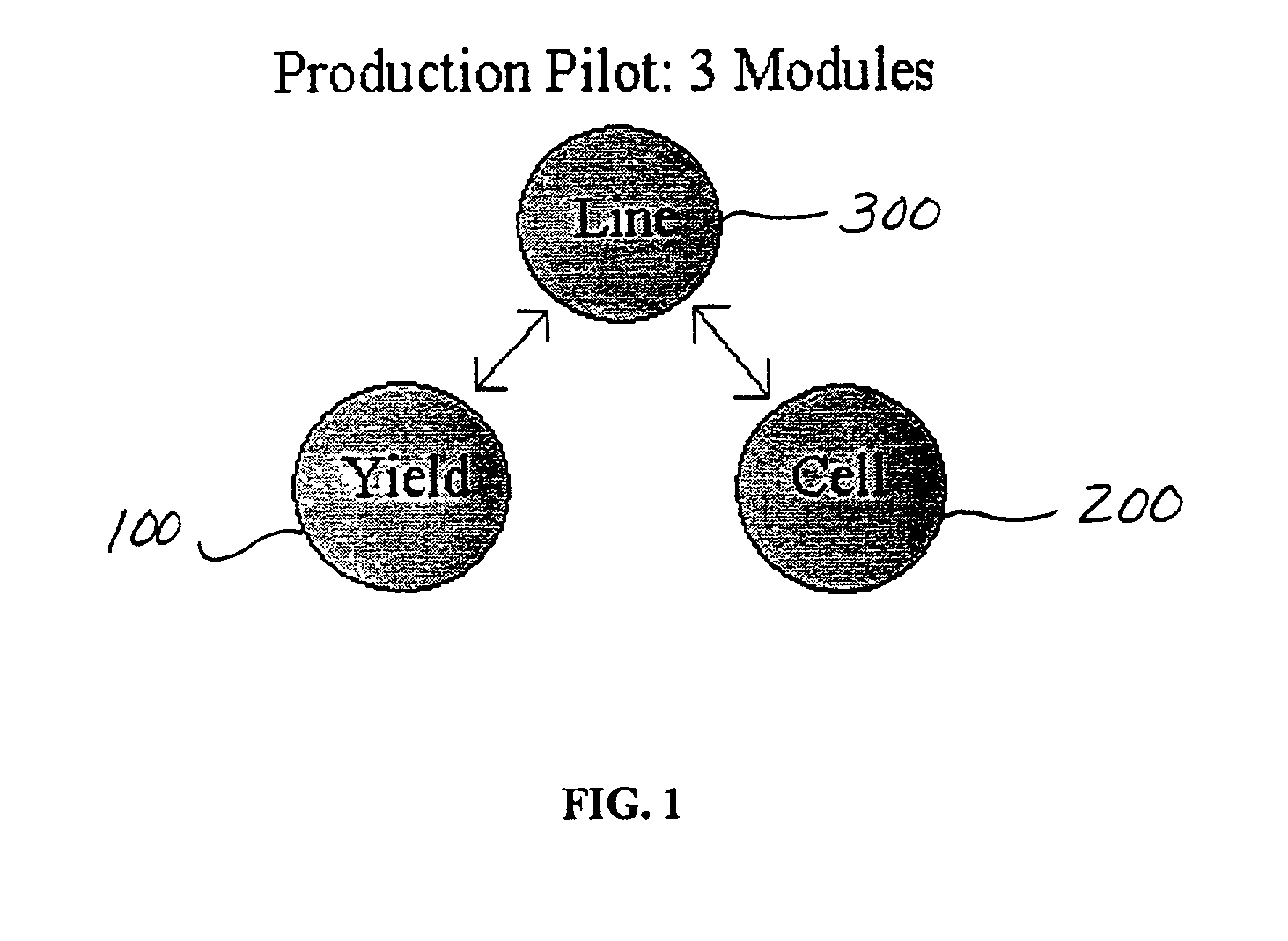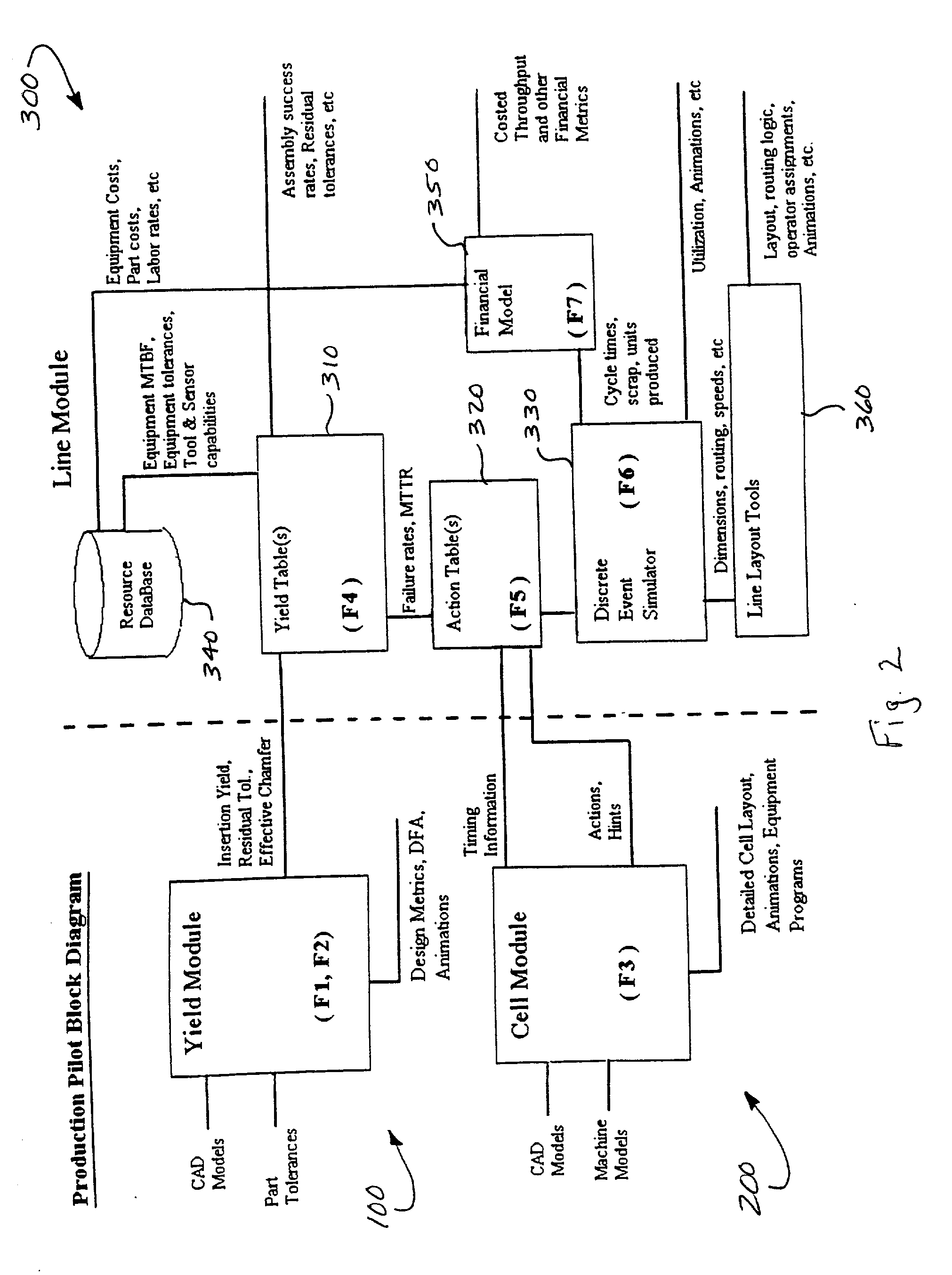Systems and methods for simulation, analysis and design of automated assembly systems
a technology of automated assembly and analysis, applied in the field of systems and methods for simulating, analyzing and designing automated assembly systems, can solve the problems of system not being applicable to the simulation of the overall automated assembly, accumulating or "stacking" errors, and few, if any, methods for predicting failure rates
- Summary
- Abstract
- Description
- Claims
- Application Information
AI Technical Summary
Problems solved by technology
Method used
Image
Examples
Embodiment Construction
[0035] I. Overview
[0036] This invention provides methods and systems for computing the productivity of a flexible assembly system and employs CAD models for 3D visualization. An automated assembly manufacturing system is called productive if it produces a large number of functional assemblies per unit time while keeping the overall cost to build and operate the assembly system low. For designing assembly systems that are productive, these systems and methods have been developed that integrate techniques to deal with the issues of, for example: timing of elemental operations of automated machines and processes; failure rates of elemental operations due to part and equipment tolerances; effects of conveyance, buffering, system repair times, etc.; 3D visualization of the modeled process; and a novel financial model with capabilities tailored to modem flexible assembly systems.
[0037] The central metric of productivity of an assembly system is the number of good units produced per unit t...
PUM
 Login to View More
Login to View More Abstract
Description
Claims
Application Information
 Login to View More
Login to View More - R&D
- Intellectual Property
- Life Sciences
- Materials
- Tech Scout
- Unparalleled Data Quality
- Higher Quality Content
- 60% Fewer Hallucinations
Browse by: Latest US Patents, China's latest patents, Technical Efficacy Thesaurus, Application Domain, Technology Topic, Popular Technical Reports.
© 2025 PatSnap. All rights reserved.Legal|Privacy policy|Modern Slavery Act Transparency Statement|Sitemap|About US| Contact US: help@patsnap.com



